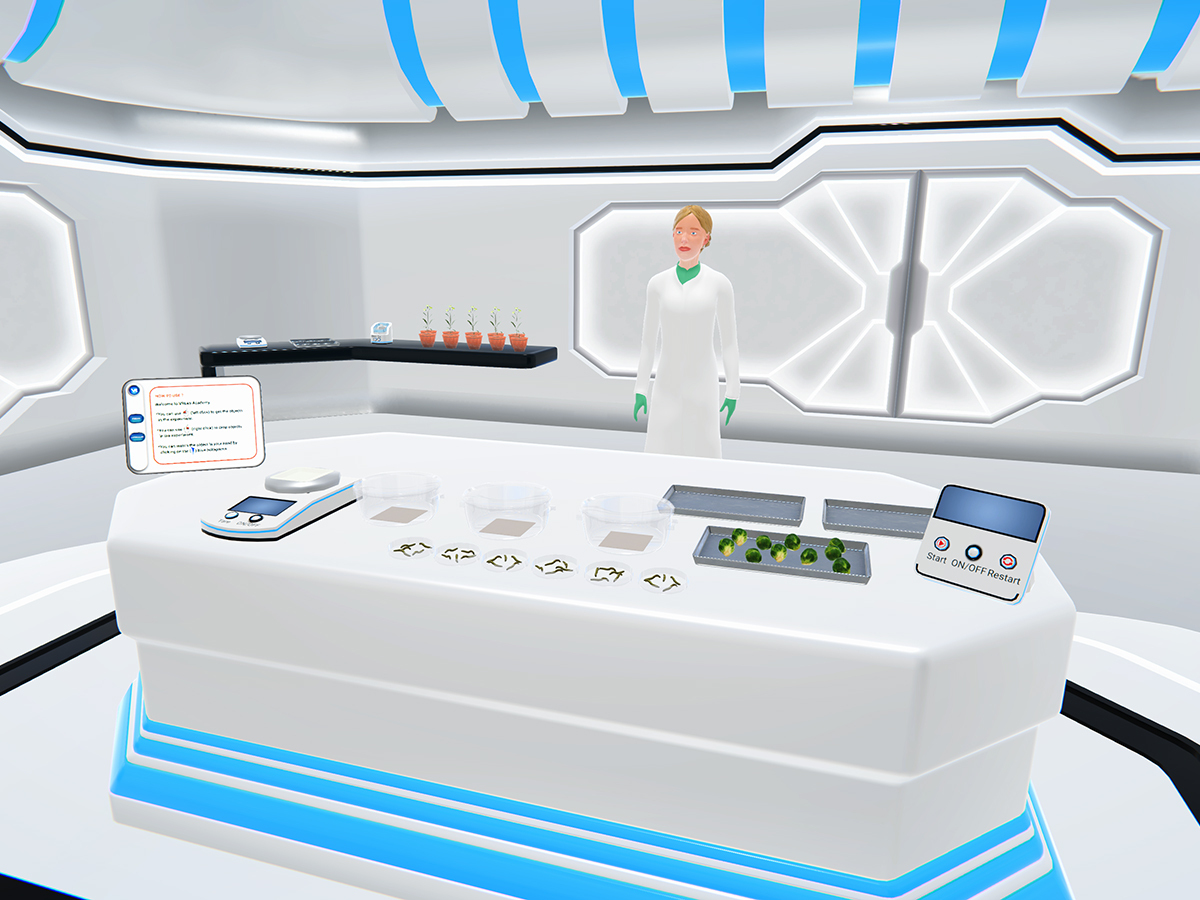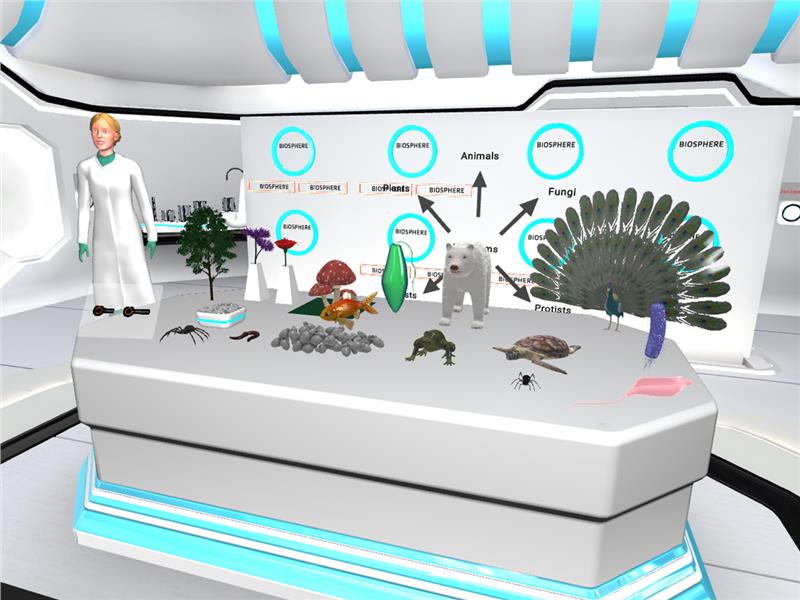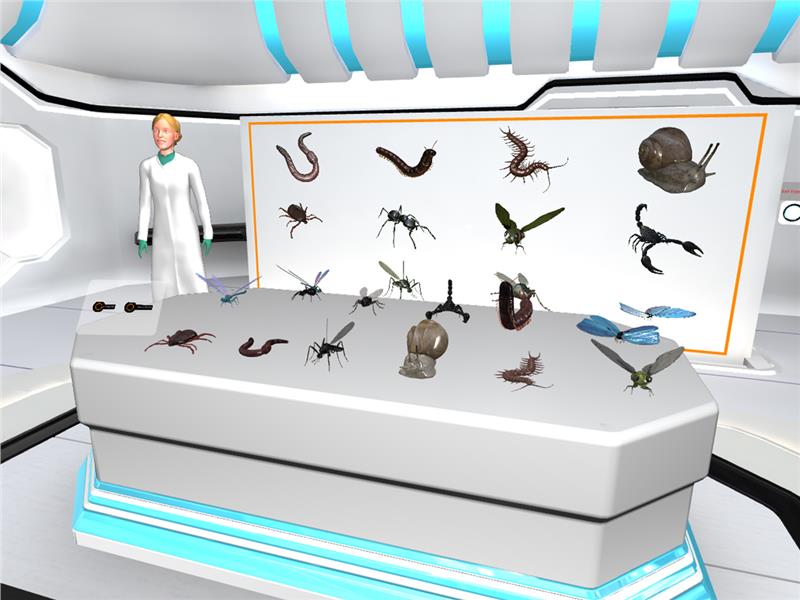Energy Dynamics and Ecology are subjects that are challenging to teach in the classroom since the related concepts cannot be observed easily. Field trips or long experiments regarding the growth of plants or animals are not feasible to illustrate these subjects in a limited amount of time. As VRLab Academy, we provide virtual Biology experiments for different curricula, including but not limited to Cambridge (GCSE, AS, A-Level), IB, AP, and NGSS. Here are 5 experiments you can use in a classroom setting through your browser on your PC, laptop, virtual reality headset, and tablet.
1. Model Organisms
Model organisms are used to study diseases, evolution, molecular pathways for development, metabolism, and gene expression. In this experiment, the student can observe the seven most common model organisms. These model organisms are zebrafish (Danio rerio), mice (Mus musculus), thale cress (Arabidopsis thaliana), nematode (C. elegans), yeast (Saccharomyces cerevisiae), Escherichia coli, and fruit fly (Drosophila melanogaster). After learning and examining these model organisms, students determine the number of male and female fruit flies in a culture bottle. Lastly, they observe the behavioral responses of fruit flies to different substances and conditions.
2. Energy Flow in Ecosystem

Organisms that are members of the same ecosystem are connected by the flow of energy and matter within the ecosystem. Since energy can be neither created nor destroyed, it can only change its form or be transferred to the next organism in a food chain. In this experiment, students can measure dry mass and investigate whether the percentage of dry mass of Brassica rapa plants changes in different life stages. Following this investigation, they use a producer and a consumer to model the energy dynamics and allocation of energy between organisms of an ecosystem and calculate the amount of energy passed from the producer to the consumer. They calculate how much of that energy is used up for biomass and respiration. They make connections between their energy dynamic model and their first investigation on Brassica rapa and interpret their results.
3. Artificial Selection
Artificial selection is not the same as natural selection since there is a human-sourced manipulation to determine that future generations will be more beneficial to harvest. In this experiment, students explain and interpret the acquired data on how humans can affect diversity within a population; explain the relationship between changes in the environment and evolutionary changes in the population. Students conduct an artificial selection on Brassica rapa plants depending on characteristics such as length, leaf color, leaf number, and trichome number.
4. Classification of Living Organisms

Living organisms are classified depending on their structure and characteristics. The classification of species allows the subdivision of living organisms into smaller and more specialized groups. The taxonomic groups used when classifying organisms are Kingdom, Phylum, Class, Order, Family, Genus, and Species. The largest group is the kingdom. There are prokaryotes (bacteria and archaea), protists, fungi, plants, and animals. In this experiment, students observe the structure and function of different organisms and classify them based on their common features.
5. Structures and Functions of Small Organisms

Organisms are classified according to their similar and different characteristics and the degree of affinity. Carl Linnaeus divided the kingdoms into classes, classes into orders, and sets into genus; and created the binomial nomenclature method of classification. In this experiment, students answer several questions depending on the given organisms to figure out their species.
In summary, VRLab Academy lets students discover Energy Dynamics with various Ecology experiments about living things and systems; Just like in the Energy Flow in Ecosystem experiment which you can measure and calculate the amount of energy transferred from a producer to a consumer and figure out how much energy is used up for biomass or respiration. Book a demo meeting to with VRLab Academy to discover more about virtual laboratories and explore our experiments that support students' understanding of life sciences.
References
Calisher, CH (2007). "Taxonomy: what's in a name? Doesn't a rose by any other name smell as sweet?". Croatian Medical Journal. 48 (2): 268–270. PMC 2080517. PMID 17436393
Egerton, Frank N. (2007). "A History of the Ecological Sciences, Part 23: Linnaeus and the Economy of Nature". Bulletin of the Ecological Society of America. 88 (1): 72–88
Urry, L. A., Cain, M. L. 1., Wasserman, S. A., Minorsky, P. V., Reece, J. B., & Campbell, N. A. (2017). Campbell biology. Eleventh edition. New York, NY, Pearson Education, Inc.